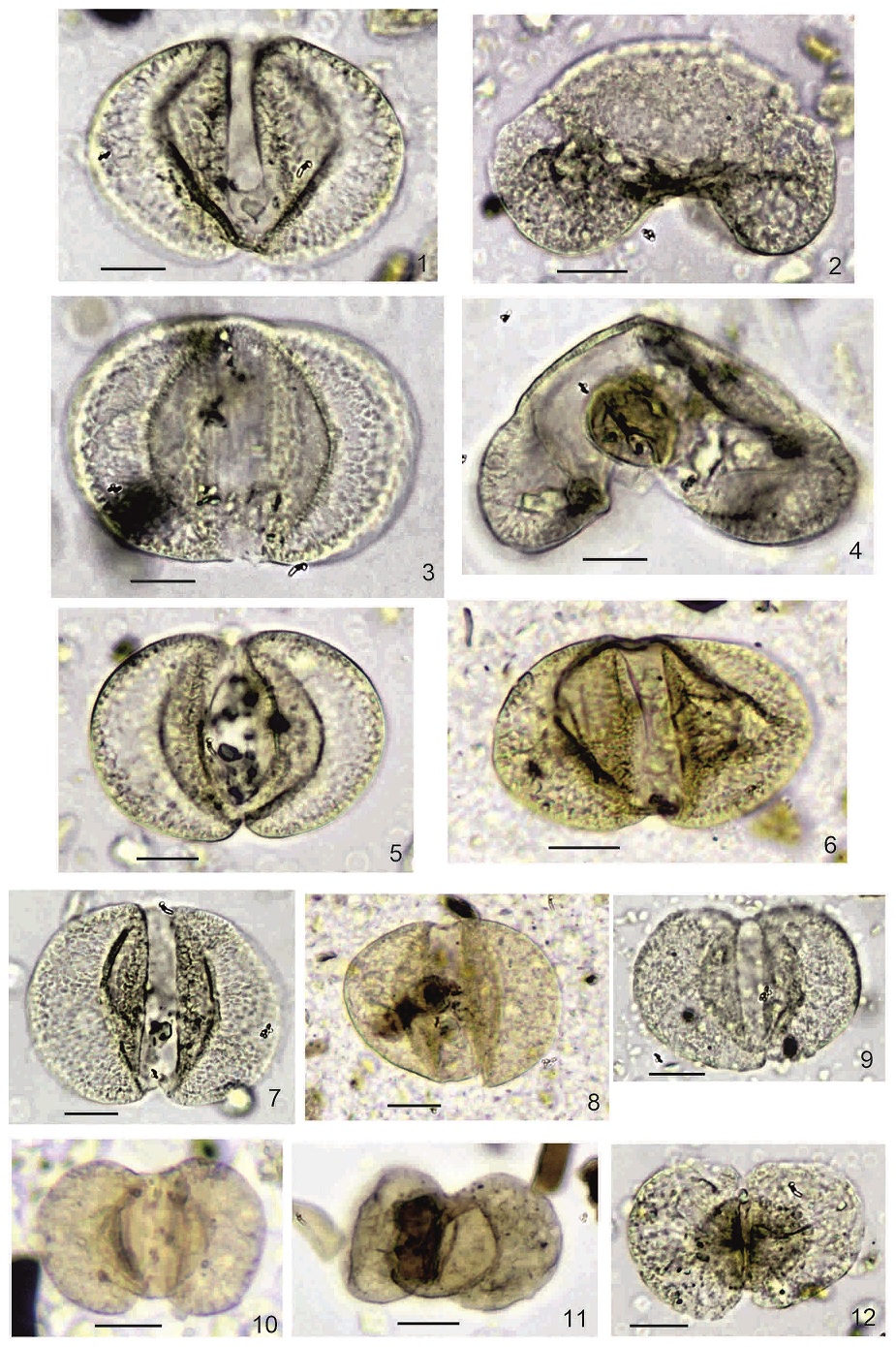Researchers from the micropaleontology laboratory of the Trofimuk Institute of Petroleum Geology and Geophysics of the Siberian Branch, Russian Academy of Sciences, have obtained interesting results by analyzing fossil pollen from a well drilled in the Karasuk district (Novosibirsk Region).
The fossil pollen, which is morphologically similar to that of the modern Cathaya, is currently ascribed by researchers to the genera Cathaya (Cathaya argyrophylla Chun et Kuang). The Chinese call it “the giant panda of the plant kingdom” because until 1950 it had been thought to be extinct. At present, this relic grows only in humid subtropical highland climates in a few provinces in southern China. At the same time, in the geologic past, the area of the cathaya species distribution was far more wider.
The IPGG SB RAS researchers have established that a tree species related to the modern Cathaya belong to the plant species existing in the Eocene, Oligocene and Miocene forest communities in the southern West Siberia (specifically, the highest abundance of the A. sellowiiformis pollen (up to 23.7%) is confined to the upper part of the Oligocene and the Lower Miocene and its last appearance is recognized in the Middle–Upper Miocene). These data expand our knowledge on the geographic range of the Cathaya ancestral form and its role in plant communities of Central Asia in the Cenozoic.
These palynomorphs belong to relict vegetation, which currently occurs in the wet subtropical climate of South China, and are important climate indicators.
The collection of specimens is stored in the IPGG SB RAS Collections of Geochrons Center for Collective Use. This work was carried out with scientific and methodological support of the Basic Scientific Research Program Nos. FWZZ-2022–0004 and FWZZ-2022–0005.
This work was supported by the Russian Science Foundation project no. 24-27-00186 “Bloom and Extinction of Turgai Flora in the Oligocene and Miocene in the Southern Part of the West Siberian Valley: Palynological Data.”

Pollen samples under the microscope. Fig. 1–9 - Abietineaepollenites sellowiiformis (Zaklinskaja) Doweld. Fig. 1, 3, 5-9 – polar projection of the pollen grain. Fig. 2, 4 - lateral projection of the pollen grain. Fig. 10, 11 – Podocarpidites libellus (Potonié) Krutzsch. Fig. 12 – Podocarpus nageiaformis Zakl.
Published by IPGG SB RAS Press Service
Photos courtesy of the researchers
For more details, please, see the published materials:
Kuzmina O.B.. – Pollen of the formal genus Abietineaepollenites R. Potonié, 1955 in the Paleogene and Neogene of the south of Western Siberia (Kulunda) // Interexpo GEO-Siberia - XX International Scientific Congress. International Scientific Conference “Subsoil Use. Mining. Directions and technologies for mineral exploration and development. Economics. Geoecology": Proceedings in 8 vol. - SGUGiT - Novosibirsk - Vol. 2 - No. 1 - P. 63-67 - 2024
Kuzmina O.B., Nikitenko B.L. – First Findings of Fossil Pollen of Ancestor Forms of Cathaya Conifers, a Modern Relic, and a Climate Indicator in the Paleogene and Neogene of West Siberia (Kulunda) // Doklady Earth Sciences – с. – 2024